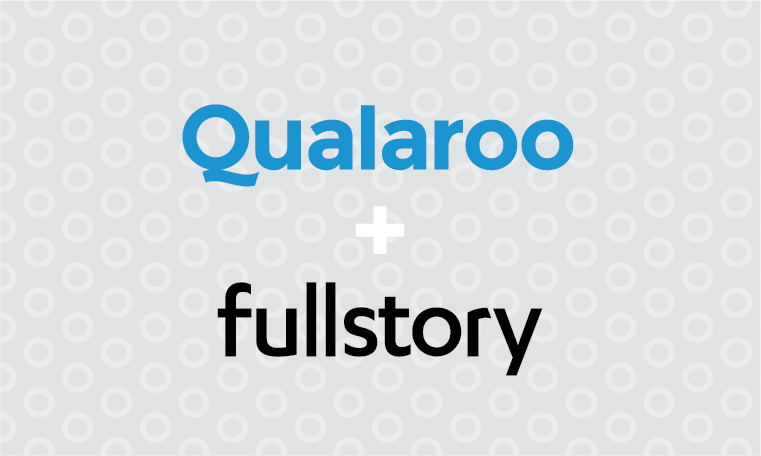Imagine you’ve just opened up a new café. You hired designers to make it beautiful, spent a ton promoting in the local paper, and now your dreams are coming true: It’s full of customers.
Only problem is, no one’s buying any coffee.
The same thing can happen to your site. Most marketers spend most of their time and budget trying to attract more visitors, but your site needs to do more than that—it needs to convert. Whether it’s signing up for a free trial, buying something from your e-commerce store, or even just signing up for your email newsletter, each page on your site needs to be driving users toward some kind of goal.
This is a key part of online marketing that most people never get right. That’s why Qualaroo wrote the Beginner’s Guide to Conversion Rate Optimization. If you’re starting your CRO efforts from scratch, it has everything you need to know. Let’s dive into five of its most valuable lessons.
Lesson 1: Conversion Rates Hinge on These 6 Factors
On any given landing page, users will only convert if they see the benefit. That’s not as simple as it sounds. You have to show them tangible value—some way in which their life will be better tomorrow if they take this action today—and convince them that you’re capable of actually delivering it. There are six key ways your landing page’s copy and design influence that thought process:
- The value proposition. What are you telling visitors they’ll actually get if they convert? You need a deep understanding of your target customers and the problems they’re trying to solve to make it enticing.
- Relevance. Each page needs to match what users expect to see when they navigate to it. Use an analytics tool like Mixpanel to put yourself in your users’ shoes and see what paths they take to each landing page. Then, make sure those pages’ content jives with what they’ve been promised.
- Clarity. Everything on your landing page needs to be super obvious. Users need to easily understand what the value proposition is, how exactly you’re going to deliver it, and what they need to do next to make it happen.
- Anxiety. Is there anything on your page that makes users feel uncertain? For instance, if your page has an ugly, outdated design or a slow load time, users might think you’re incapable of delivering the promised value or even worse, that you’re some kind of scammer.
- Distraction. Most landing pages don’t need anything more than a headline, a striking image, some copy describing what readers will get, and of course, a clear call-to-action to hook the reader. Any more than that is just clutter, which will distract users from converting.
- Urgency. You need to show visitors not just why taking action is a good idea, but why they need to do it right now. The key is to give your users a combination of motivation and specific instructions for next steps. That motivation should come primarily from an irresistible value proposition, but you can increase it with tactics like limited-time offers or deadlines to buy.
Anytime you want to run an experiment to boost conversion rates, ask yourself how your proposed change can enhance one of these six elements of the page in question.
Lesson 2: You Need an Ever-Evolving, Customized CRO Plan
The biggest mistake marketers make with CRO is looking for quick fixes without taking the time to think about why their conversion rates are what they are. They take shots in the dark, haphazardly applying best practices that have worked for other sites. But even if some of those borrowed tactics work, your success won’t be sustainable because you’ll have no idea why they’re working or what to try next.
Instead, you need to come up with your own overarching CRO plan for each landing page by working backwards from your customers’ objectives and constantly testing better ways to help them meet those objectives. It’s a simple process:
- Lay out the conversion goal—signups, purchases, e-book downloads, whatever—for each page on your site and measure how well you’re meeting that goal now. That’s the baseline performance you want to improve on.
- Come up with hypotheses for what information customers viewing that page would need to convert and specific ways you can modify the page to deliver that information better.
- Start small. Test a single change and see how conversion rates for the new version of the site compare to your baseline results.
- Apply what you learn to come up with a new hypothesis, and test again. Whereas marketers without a focused CRO plan would just try another tactic and pray it works, you need to realize that every test—even ones that don’t beat your baseline results—tells you something valuable about what entices your customers.
- Repeat continuously.
Let’s say you have a wedding planning business and one of the pages on your site asks users to register for a quick video consultation. You might hypothesize that in order to sign up, your users would want social proof that you’ve put on great weddings for other people. You could test that by adding some testimonial quotes from happy couples to the page. Depending on how that performed versus your baseline, your next test might be to add links to more substantial case studies, or pictures of some of your past weddings.
Related Read: Discover Top ways to increase Mobile App Conversion Rates
Lesson 3: Kill the Bounce
Bounce rate is the percentage of customers who leave your site after looking at just one page. It represents a major failure for a landing page. Not only is it not converting, but it’s giving visitors such a bad first impression of your site that they leave without exploring any additional pages.
Luckily, you can figure out what’s causing bounce rate with the right tools and a simple process:
- Use Google Analytics to find your landing pages with the highest bounce rate.
- Drill down further in Google Analytics to find out how much of that traffic is coming from Google searches and how much is coming from external links on other sites.
- Use Qualaroo to ask everyone who visits that landing page one simple question: Did this page meet your expectations? That cuts through the noise and lets customers quickly tell you what they think of your landing page.
- Next, hit who answers no to that last question with an immediate follow-up survey. How you follow up depends on where the visitor came from. Ask users arriving via Google search what search terms they used to get to the page. That lets you identify search terms you’re targeting that are actually sending you bad traffic. Ask users arriving from external links what they were expecting to find on the page. You might find that other sites linking to your landing page are misrepresenting your site and sending visitors who don’t even fit your customer profile.
With a focused, scientific approach, you can figure out how to get your landing pages moving people through the conversion funnel rather than bouncing them off your site.
Start Optimizing Now
Between paid ads, SEO, and creating awesome content, you pour an incredible amount of resources into getting people to your site. Don’t let it go to waste. If none of those visitors are converting, you’re leaving money on the table and all your efforts are for naught.
CRO is the single best investment you can make in your customer acquisition efforts. But these tactics are just the basics. For more advanced tips and tricks, check out our Beginner’s Guide to Conversion Rate Optimization.
FREE. All Features. FOREVER!
Try our Forever FREE account with all premium features!

 We'd love your feedback!
We'd love your feedback! Thanks for your feedback!
Thanks for your feedback!







